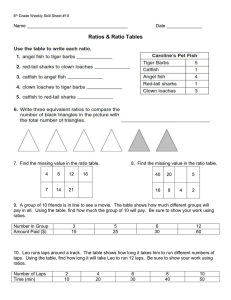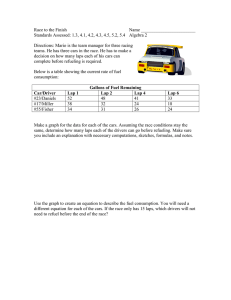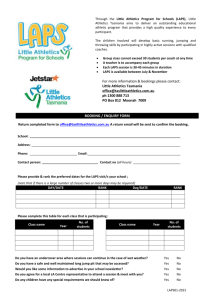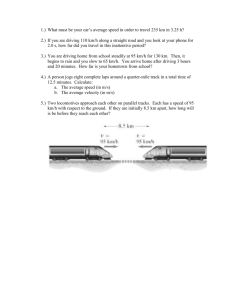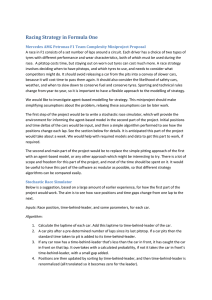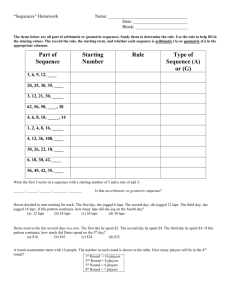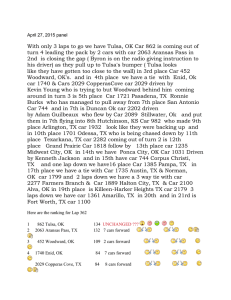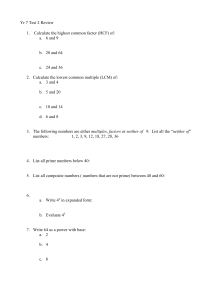Velocity problems
advertisement
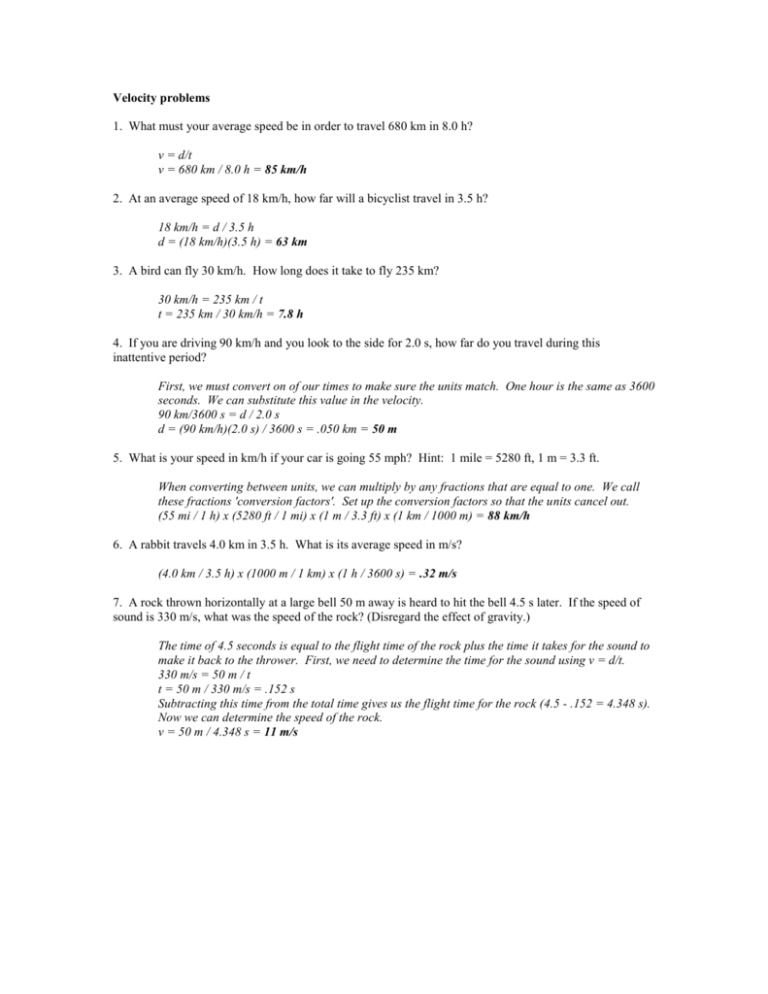
Velocity problems 1. What must your average speed be in order to travel 680 km in 8.0 h? v = d/t v = 680 km / 8.0 h = 85 km/h 2. At an average speed of 18 km/h, how far will a bicyclist travel in 3.5 h? 18 km/h = d / 3.5 h d = (18 km/h)(3.5 h) = 63 km 3. A bird can fly 30 km/h. How long does it take to fly 235 km? 30 km/h = 235 km / t t = 235 km / 30 km/h = 7.8 h 4. If you are driving 90 km/h and you look to the side for 2.0 s, how far do you travel during this inattentive period? First, we must convert on of our times to make sure the units match. One hour is the same as 3600 seconds. We can substitute this value in the velocity. 90 km/3600 s = d / 2.0 s d = (90 km/h)(2.0 s) / 3600 s = .050 km = 50 m 5. What is your speed in km/h if your car is going 55 mph? Hint: 1 mile = 5280 ft, 1 m = 3.3 ft. When converting between units, we can multiply by any fractions that are equal to one. We call these fractions 'conversion factors'. Set up the conversion factors so that the units cancel out. (55 mi / 1 h) x (5280 ft / 1 mi) x (1 m / 3.3 ft) x (1 km / 1000 m) = 88 km/h 6. A rabbit travels 4.0 km in 3.5 h. What is its average speed in m/s? (4.0 km / 3.5 h) x (1000 m / 1 km) x (1 h / 3600 s) = .32 m/s 7. A rock thrown horizontally at a large bell 50 m away is heard to hit the bell 4.5 s later. If the speed of sound is 330 m/s, what was the speed of the rock? (Disregard the effect of gravity.) The time of 4.5 seconds is equal to the flight time of the rock plus the time it takes for the sound to make it back to the thrower. First, we need to determine the time for the sound using v = d/t. 330 m/s = 50 m / t t = 50 m / 330 m/s = .152 s Subtracting this time from the total time gives us the flight time for the rock (4.5 - .152 = 4.348 s). Now we can determine the speed of the rock. v = 50 m / 4.348 s = 11 m/s 8. An airplane travels 1800 km at a speed of 1000 km/h. It then encounters a headwind that slows it to 850 km/h for the next 2300 km. What was the average speed of the plane for this trip? Average speed is the total distance divided by the total time. Adding the distances gives us a total of 4100 km. We need to determine the times separately and then add them together to get the total time. 1000 km/h = 1800 km / t t = 1800 km / 1000 km/h = 1.8 h 850 km/h = 2300 km / t t = 2300 km / 850 km/h = 2.7 h total time = 1.8 h + 2.7 h = 4.5 h avreage speed = 4100 km / 4.5 h = 911 km/h 9. A racecar driver must average 180 km/h for four laps to qualify for a race. Because of engine trouble, the car averages only 150 km/h over the first two laps. What average speed must be maintained for the last two laps? The distance for one lap is unknown, but because each lap is the same distance, we can make up any distance. Suppose the track is 180 km long. To average 180 km/h over 4 laps would take exactly 4 hours. We can subtract the time needed for laps 1 and 2. 150 km/h = (2 x 180 km) / t t = 360 km / 150 km/h = 2.4 h 4 h - 2.4 h = 1.6 h for laps 3 and 4 v = (2 x 180 km) / 1.6 h = 225 km/h 10. Calculate the carrying capacity (number of cars passing a given point per hour) on a freeway with three lanes (in one direction) using the following assumptions: the average speed is 90 km/h, the average length of a car is 6.0 m, and the average distance between cars should be 65 m. With 3 lanes, 3 cars can pass at a time. We can treat this as if each car is 71 m long (6.0 m + 65 m space). The front car in each lane will travel 90 km, or 90,000 m during the course of an hour. The number of cars in an hour per lane would be 90,000 m / 71 m which equals 1267.6 cars per lane. Multiply this by the 3 lanes and we get a carrying capacity of 3800 cars.

